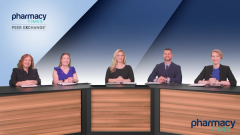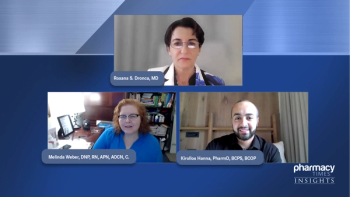
Targeting Patients at Risk for Severe RSV
Panelists discuss how pharmacies can boost RSV vaccination rates in high-risk adults by leveraging patient visits—especially during other immunizations—using integrated immunization registries and medication profiles to identify eligible patients, involving pharmacy technicians in vaccine conversations, and employing presumptive recommendation strategies to increase acceptance and awareness.
Episodes in this series

Pharmacies play a crucial role in increasing RSV vaccination rates among high-risk adults by leveraging patient interactions and existing workflows. One of the most effective strategies is to engage patients who are already in the pharmacy, especially those coming in for other vaccines. Because these individuals have demonstrated willingness to receive immunizations, the pharmacist can introduce the RSV vaccine as an additional preventive measure. This approach opens the door to education and raises awareness about RSV risks and vaccine eligibility, helping to reduce the perception that RSV is only a mild or childhood illness.
Utilizing technology, such as state immunization registries integrated with pharmacy software, greatly enhances the ability to identify patients with vaccination gaps. These tools allow pharmacists to quickly assess who may be due for the RSV vaccine based on their immunization history. Additionally, medication profiles can be a valuable resource for identifying patients at higher risk, such as those who pick up inhalers or other prescriptions associated with respiratory conditions. Interactions during prescription pickups or outreach calls provide further opportunities for personalized vaccine discussions, making it easier to connect with patients in a comfortable and familiar setting.
The involvement of pharmacy technicians is also critical to an effective vaccination strategy. Educating technicians about key medications and conditions that indicate RSV vaccine eligibility empowers them to initiate conversations and recognize vaccination opportunities throughout the patient’s visit. Although technicians often administer vaccines, the final recommendation from the pharmacist is essential to strengthen patient confidence. Employing a presumptive recommendation style—framing the vaccine as the next natural step in care rather than an optional choice—has been shown to increase acceptance. By combining technology, teamwork, and communication techniques, pharmacies can better target at-risk patients and improve RSV vaccine uptake.
Newsletter
Stay informed on drug updates, treatment guidelines, and pharmacy practice trends—subscribe to Pharmacy Times for weekly clinical insights.




















































































































































































































